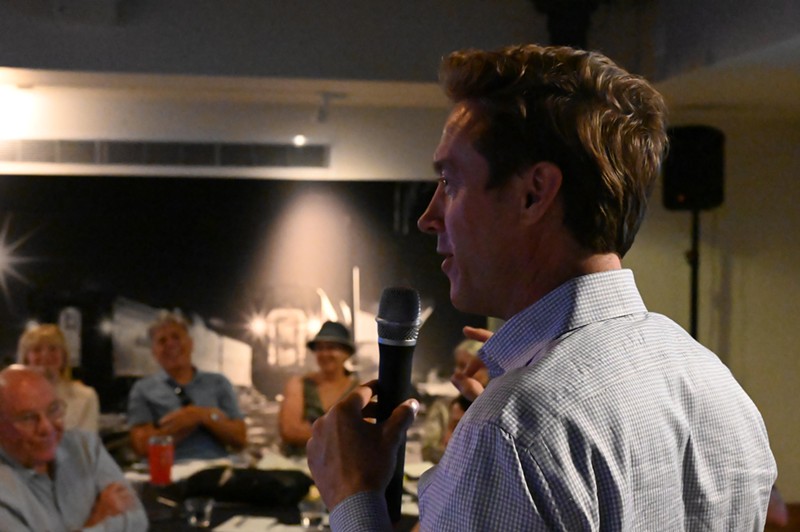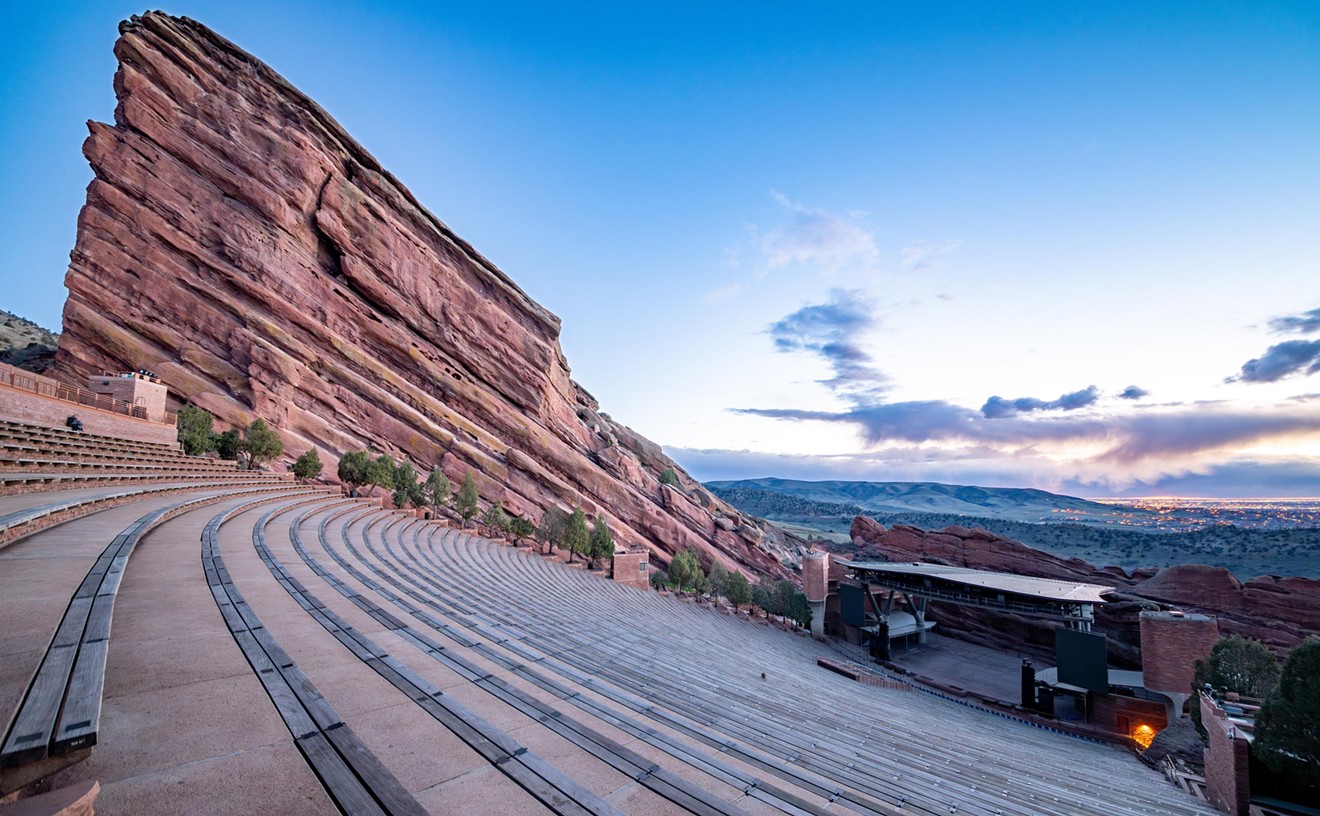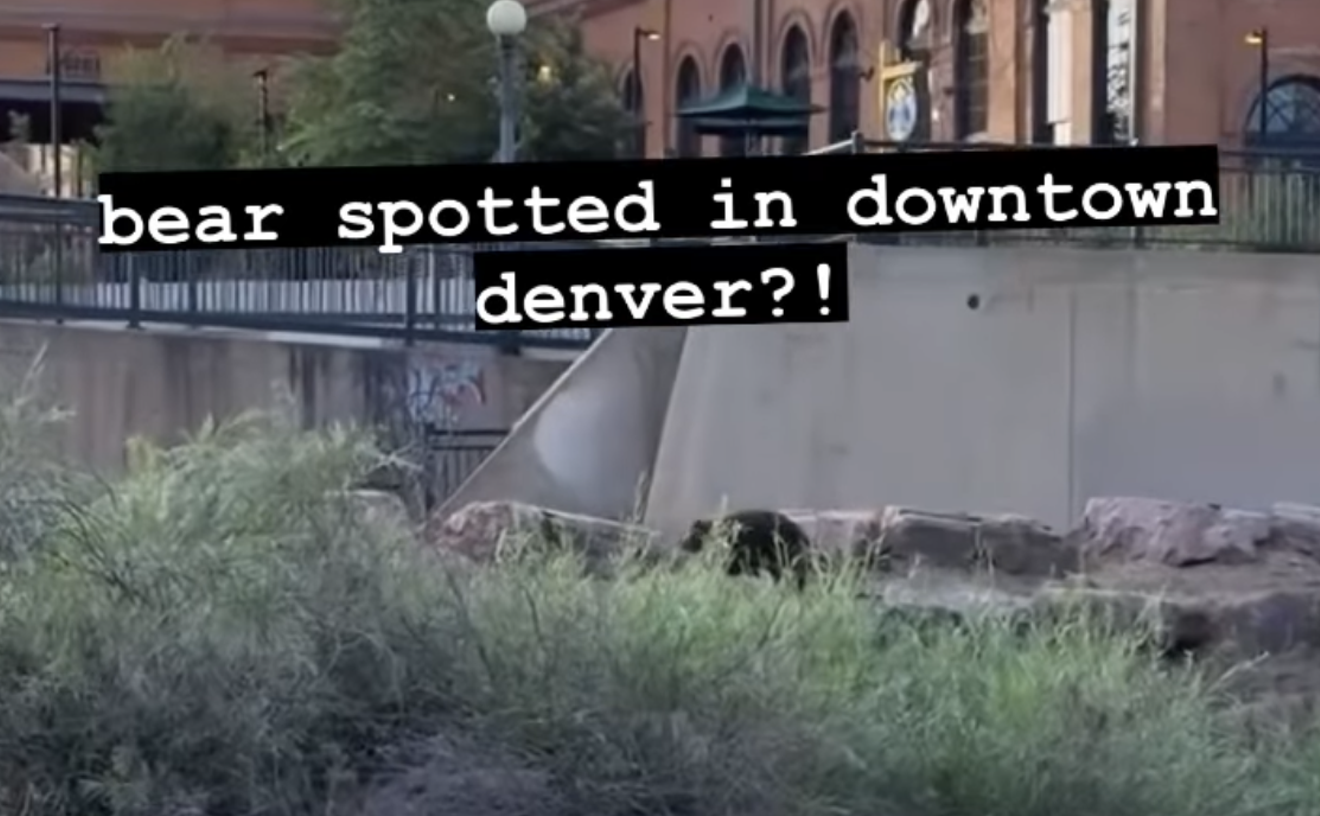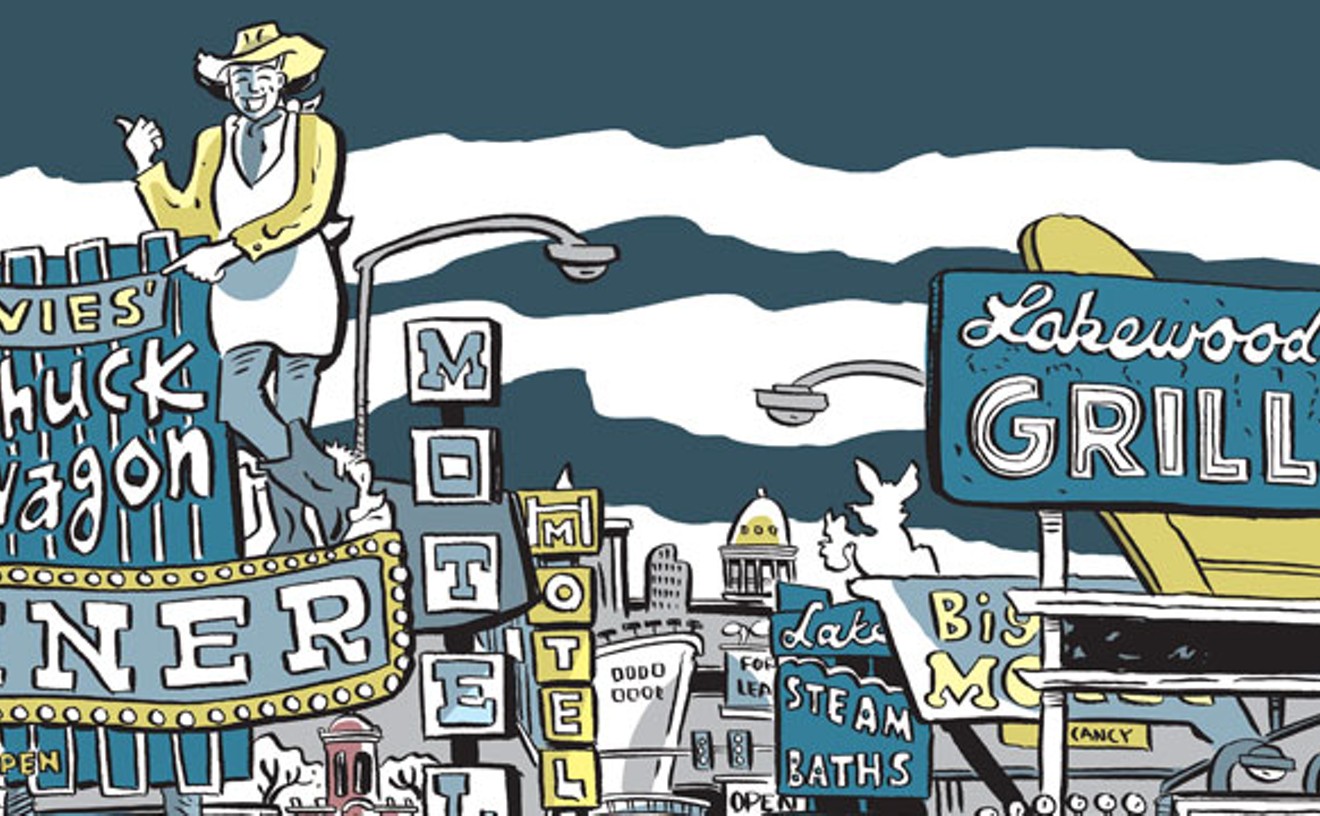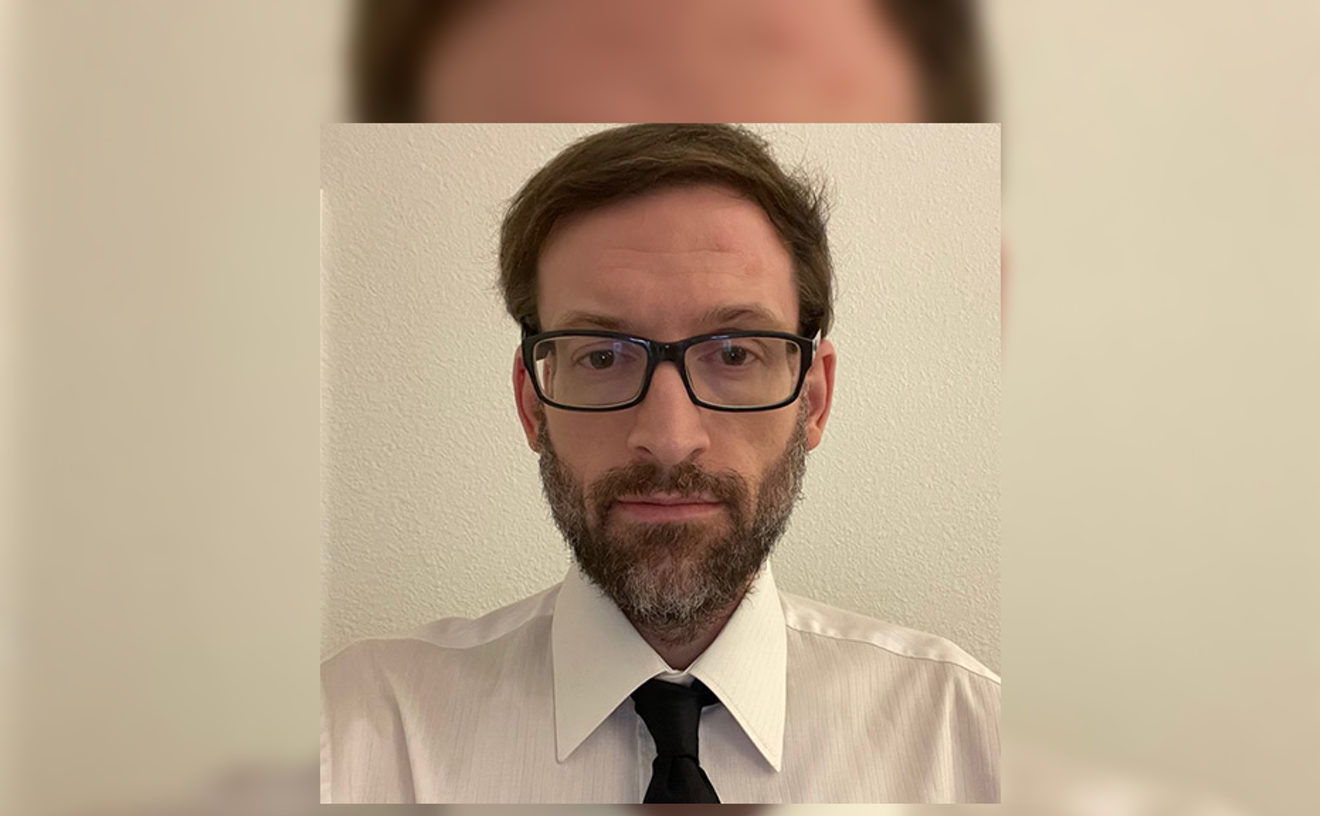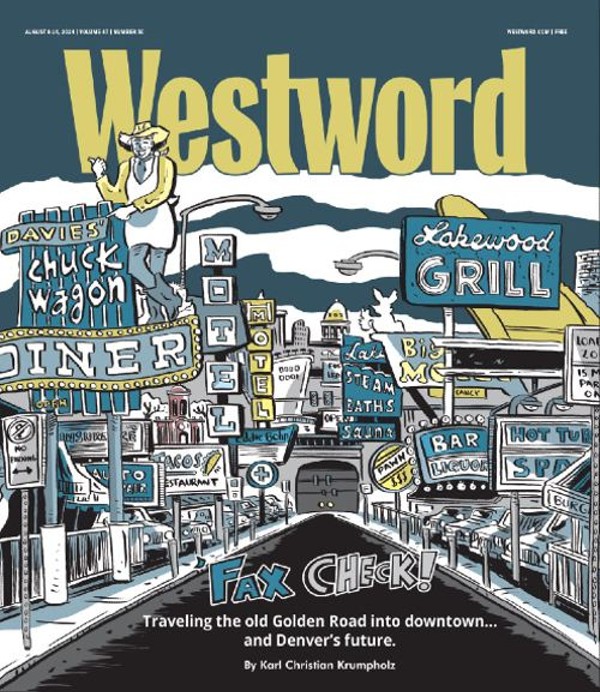"This is, I think, the most exciting moment to be living and working and playing downtown in a quarter-century," Johnston told a crowd of more than seventy residents. "We're about to launch what would be the largest investment in downtown Denver in this city's history."
Johnston first revealed his $500 million plan to revitalize downtown in early May, but that planned investment increased by $70 million after the city updated revenue growth forecasts from Union Station, says Laura Swartz, spokesperson for Denver's Finance Department. If approved in November by voters who live or own a business downtown, the measure would renew property and sales taxes that go to the Denver Downtown Development Authority (DDDA).
The city estimates that about 2,500 people will be eligible to vote on the tax on November 5 because they live or own a business in a small area of downtown that closely surrounds Union Station. But before the measure can make it to the ballot, it needs Denver City Council to approve putting it there. A discussion is scheduled for Tuesday, August 6, with the council's Finance & Governance committee.
While the measure is on track to make the ballot, councilmembers haven't been in lockstep with the mayor all this time.
Last month, council delayed an "Affordable Denver" half-cent sales tax that Johnston is also promoting in order to get more information from the mayor's team and the bill's sponsors; proponents say the tax would generate $100 million a year for the next decade to build cost-controlled housing units.
The DDDA ballot measure specific to downtown residents would reissue a property and sales tax that the city has been collecting since 2008, and expand the area where that money can be used. Right now, the DDDA can only invest its tax revenue in improving Union Station, but this measure would allow it to expand to an area that goes from Wynkoop Street to Colfax Avenue.
Voters who live or work in that expanded area wouldn't have a say over where the money goes, but they wouldn't be taxed if the measure passes, either. At the town hall, Johnston noted that "the most important part" of this proposal is that it doesn't increase taxes but rather renews an existing tax. It would make millions available as soon as early 2025 to the new areas via bank loans that DDDA would pay back using the tax revenue, according to Swartz.
"The question we'll be putting to electors, who are residents and business owners who live [near Union Station], is will you give us permission to continue to use these funds over the next fifteen years to support the kind of amazing place-making that has happened right here at Union Station?" Johnston said. "If the electors vote 'yes,' we would have resources over the next fifteen years to spend all the way from Union Station, all the way down to Civic Center Park, up through 20th [Street], all the way down to the Convention Center and all along the 16th Street Mall."
What do Downtown Denver Residents Want?
At the meeting, residents shared how they would like to see the city improve downtown. Most residents asked to see more greenways and tree canopies, pedestrian-only streets, nightlife and foot traffic. One resident suggested more "water spaces" like fountains or splash pads. "They would be really interesting and attract kids like here at Union Station," she said.
According to a Westword analysis of the Urban Heat Island index, all five of Denver's hottest neighborhoods are located downtown, with Union Station taking the top spot. The neighboring Central Business District took number two.
A couple of residents said that Wynkoop Street should be a pedestrian-only street, at least in front of Union Station. Residents also asked for more use of the Platte River, including swimming areas.
Residents also complained about how hard it is to bike downtown. "We have a lot of great bike infrastructure that's been added, but a lot of it is disconnected," one resident said. "It will look great for like three blocks, and then I have to ride in traffic for three blocks."
A handful of people mentioned that electronic scooters on sidewalks downtown are a safety problem, and one resident suggested using geofencing, or a virtual perimeter that would bring the scooters to a stop. Hinds, who plans to begin looking into e-scooter restrictions for city council, told residents he shared their frustration with e-scooters.
A few residents asked the city to reopen the Delgany Street pedestrian bridge that crosses Cherry Creek. It's been closed for the last two years for repairs, but the city doesn't know who owns it. "We really want to see the city get engaged with that," a resident said. "It just needs to be made a priority," another said.
Hinds gave residents a plan for reopening that bridge: The city can condemn the bridge and then give it a new owner. "That's the plan we're undertaking right now," he said, adding that the only hangup is that the city can't find anyone who wants to take the bridge.
Johnston also shared the timeline for the reopening of the 16th Street Mall, a sore subject for many Denver residents and downtown business owners. The city is opening the mall block by block, he said, with the first revitalized block opening between Larimer and Lawrence streets in early July. Johnston says that two more blocks will open next month, and another set will open before the holidays.
"But the full mall will be open, buses will be operating by next summer," Johnston added. "That is a key part of this reactivation."
The mayor said he wants to turn the "Central Business District into a central neighborhood district, where more and more folks live and work around the clock, and you have playgrounds for kids, and you have dog parks, and you have easily walkable spaces." While the measure is on track to make the ballot, councilmembers haven't been in lockstep with the mayor all this time.
Last month, council delayed an "Affordable Denver" half-cent sales tax that Johnston is also promoting in order to get more information from the mayor's team and the bill's sponsors; proponents say the tax would generate $100 million a year for the next decade to build cost-controlled housing units.
The DDDA ballot measure specific to downtown residents would reissue a property and sales tax that the city has been collecting since 2008, and expand the area where that money can be used. Right now, the DDDA can only invest its tax revenue in improving Union Station, but this measure would allow it to expand to an area that goes from Wynkoop Street to Colfax Avenue.
Voters who live or work in that expanded area wouldn't have a say over where the money goes, but they wouldn't be taxed if the measure passes, either. At the town hall, Johnston noted that "the most important part" of this proposal is that it doesn't increase taxes but rather renews an existing tax. It would make millions available as soon as early 2025 to the new areas via bank loans that DDDA would pay back using the tax revenue, according to Swartz.
"The question we'll be putting to electors, who are residents and business owners who live [near Union Station], is will you give us permission to continue to use these funds over the next fifteen years to support the kind of amazing place-making that has happened right here at Union Station?" Johnston said. "If the electors vote 'yes,' we would have resources over the next fifteen years to spend all the way from Union Station, all the way down to Civic Center Park, up through 20th [Street], all the way down to the Convention Center and all along the 16th Street Mall."
What do Downtown Denver Residents Want?
At the meeting, residents shared how they would like to see the city improve downtown. Most residents asked to see more greenways and tree canopies, pedestrian-only streets, nightlife and foot traffic. One resident suggested more "water spaces" like fountains or splash pads. "They would be really interesting and attract kids like here at Union Station," she said.According to a Westword analysis of the Urban Heat Island index, all five of Denver's hottest neighborhoods are located downtown, with Union Station taking the top spot. The neighboring Central Business District took number two.
A couple of residents said that Wynkoop Street should be a pedestrian-only street, at least in front of Union Station. Residents also asked for more use of the Platte River, including swimming areas.
Johnston told residents that the city is looking at two models for transforming the stretch of Speer Boulevard that runs from Colfax Avenue to the South Platte River into commercial and residential land. The plan would involve shutting down half of the boulevard and moving traffic to one side.
"You could move all the Speer lanes to the same side, which would be to the west, where the southbound is, and all the land from Speer could then be open for potential residential and commercial activation," he said. "This is an exciting opportunity."
The mayor didn't give a timeline for that concept; Councilman Chris Hinds, whose District 10 includes downtown, said the idea comes from the Cherry Creek and Speer Boulevard Vision and Reconfiguration Feasibility Study, a city project that looks at how to better connect the Auraria campus and downtown Denver with bridges or underpasses. That project is only in its early stages, however.
"We have the largest college campus in the state with the Auraria campus, and they're right next to the biggest business concentration in the state," Hinds explained. "And yet they're divided by this moat that's called Speer."
Speer Boulevard is just outside the area that Johnston wants to target with the renewal of the DDDA. The city has yet to report how much it could cost to renovate the major street or how long it could take.
"You could move all the Speer lanes to the same side, which would be to the west, where the southbound is, and all the land from Speer could then be open for potential residential and commercial activation," he said. "This is an exciting opportunity."
The mayor didn't give a timeline for that concept; Councilman Chris Hinds, whose District 10 includes downtown, said the idea comes from the Cherry Creek and Speer Boulevard Vision and Reconfiguration Feasibility Study, a city project that looks at how to better connect the Auraria campus and downtown Denver with bridges or underpasses. That project is only in its early stages, however.
"We have the largest college campus in the state with the Auraria campus, and they're right next to the biggest business concentration in the state," Hinds explained. "And yet they're divided by this moat that's called Speer."
Speer Boulevard is just outside the area that Johnston wants to target with the renewal of the DDDA. The city has yet to report how much it could cost to renovate the major street or how long it could take.
Residents also complained about how hard it is to bike downtown. "We have a lot of great bike infrastructure that's been added, but a lot of it is disconnected," one resident said. "It will look great for like three blocks, and then I have to ride in traffic for three blocks."
A handful of people mentioned that electronic scooters on sidewalks downtown are a safety problem, and one resident suggested using geofencing, or a virtual perimeter that would bring the scooters to a stop. Hinds, who plans to begin looking into e-scooter restrictions for city council, told residents he shared their frustration with e-scooters.
A few residents asked the city to reopen the Delgany Street pedestrian bridge that crosses Cherry Creek. It's been closed for the last two years for repairs, but the city doesn't know who owns it. "We really want to see the city get engaged with that," a resident said. "It just needs to be made a priority," another said.
Hinds gave residents a plan for reopening that bridge: The city can condemn the bridge and then give it a new owner. "That's the plan we're undertaking right now," he said, adding that the only hangup is that the city can't find anyone who wants to take the bridge.
Johnston also shared the timeline for the reopening of the 16th Street Mall, a sore subject for many Denver residents and downtown business owners. The city is opening the mall block by block, he said, with the first revitalized block opening between Larimer and Lawrence streets in early July. Johnston says that two more blocks will open next month, and another set will open before the holidays.
"But the full mall will be open, buses will be operating by next summer," Johnston added. "That is a key part of this reactivation."
The meeting was a Community Conversation, a series of town halls that are part of Johnston's Citywide Goals 2024. This one was the first to focus on vibrancy. The mayor completed the first series on safety in June, and next week, he'll resume a series on affordability, where he's promoting his "Affordable Denver" tax. Another upcoming series will focus on "great government."

